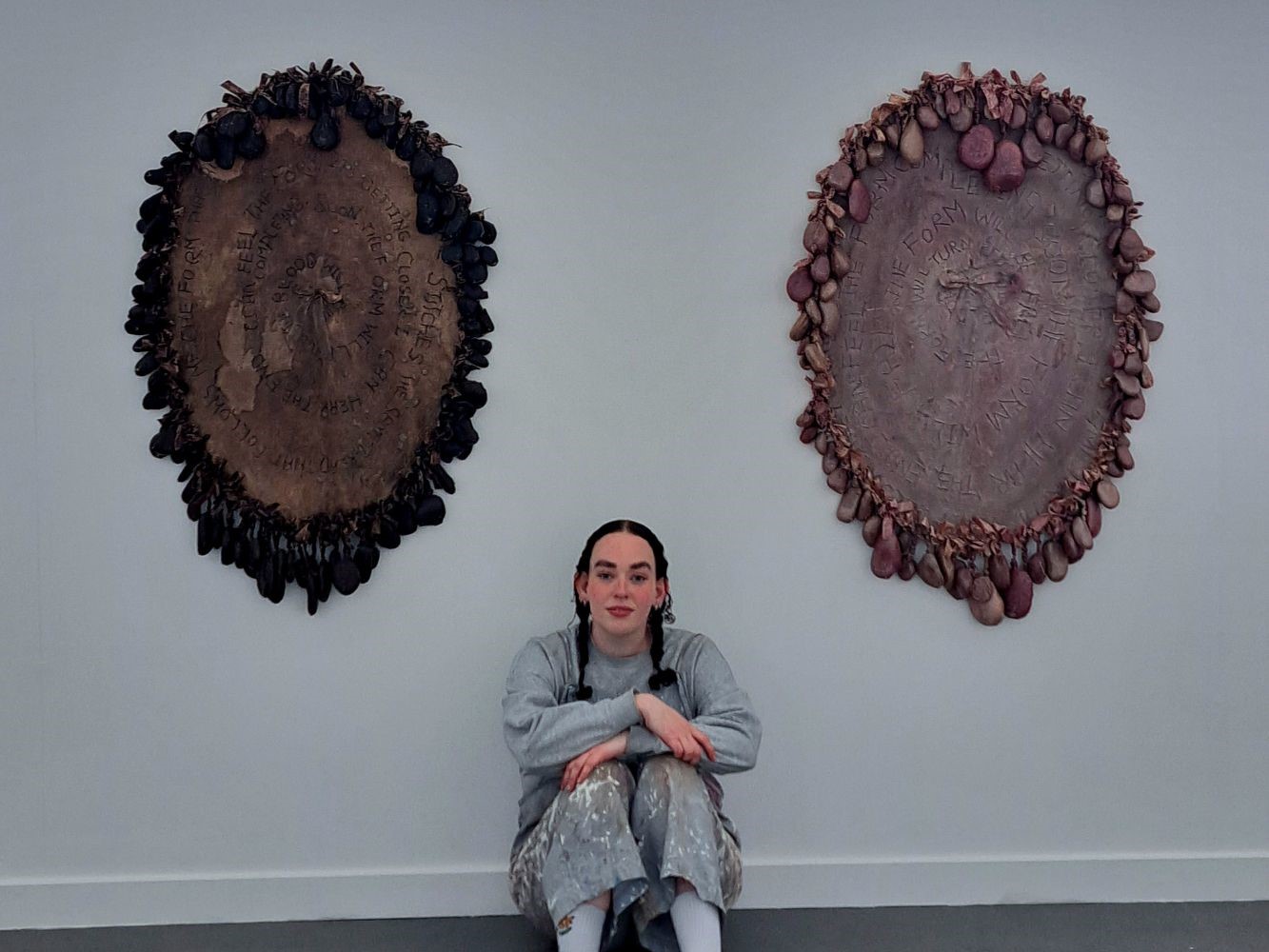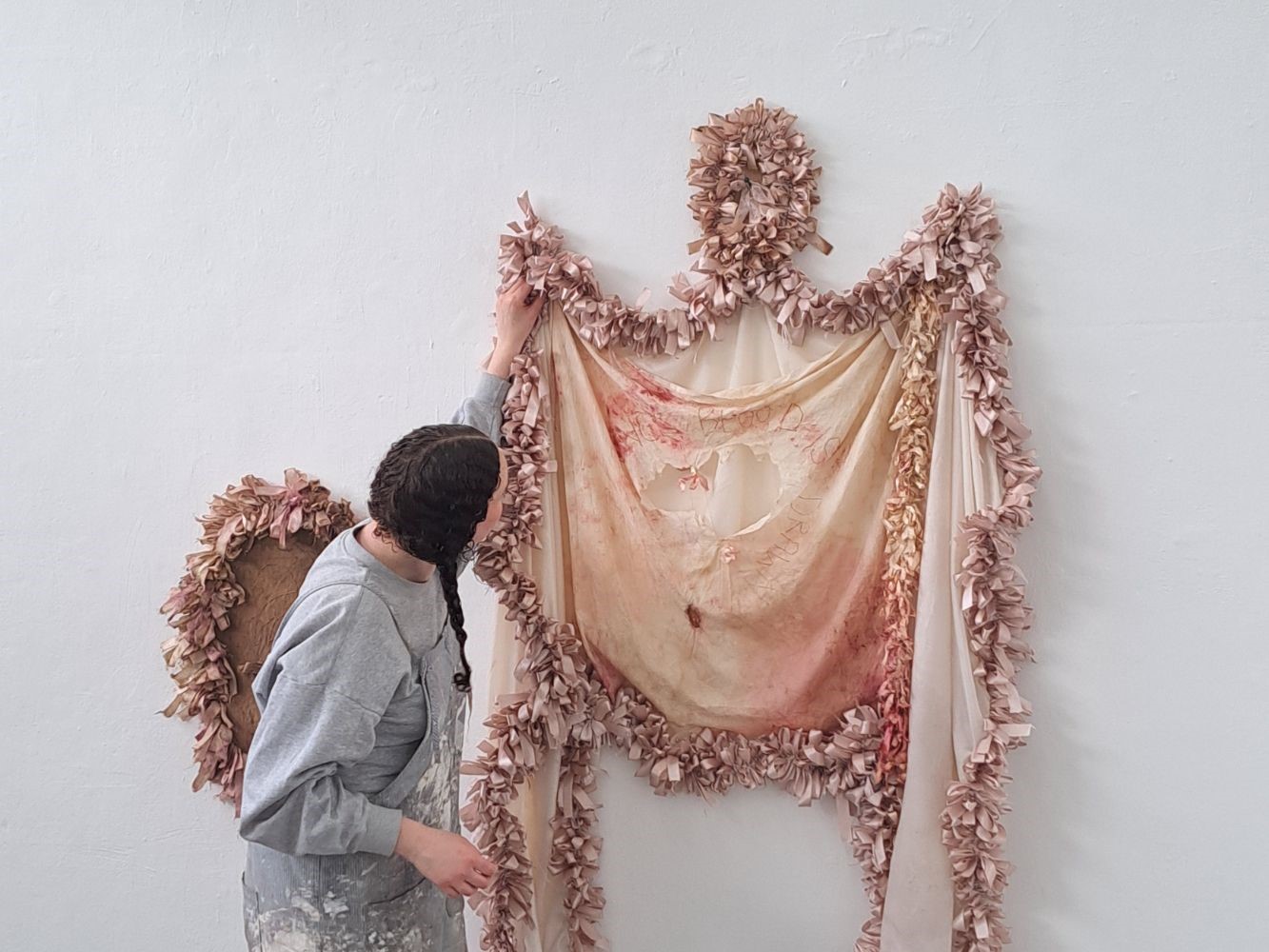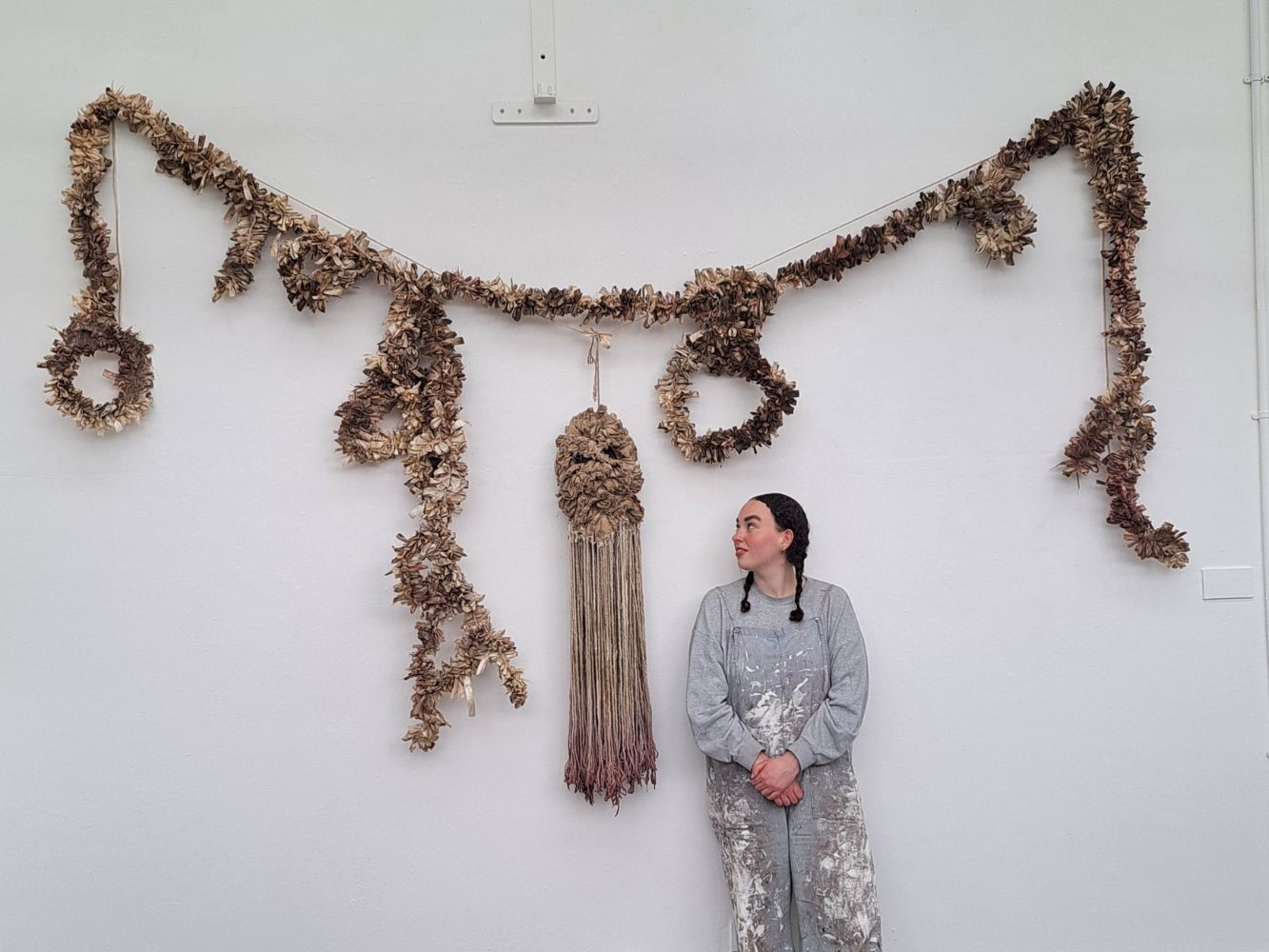Lucy Gibb - BA (Hons) Painting

Lucy who is originally from Dundee and now lives in Aberdeen, draws on the theme of ‘Women's Work’ as the focal point of her practice and uses textiles to explore the theme of Women's Craft.
“In the same way that there is a beauty to the craft of female manual labourers, there is also a monotony. I aim to show the hard work and skill required within hand craft, much like that undertaken by past generations of women.
“I use my practice to explore my own identity as a woman. This has led me to use the ear as a motif in my work as a way to face my own insecurities and to allow them to become something I am proud of. I choose to use the ear as a motif as my own ears have been a source of insecurity for me in the past. I use them in my work as I have learned to celebrate them. By allowing me to celebrate them through my practice, I now love my ears which shows the empowerment your own work can have.
“I use a broad use of materials to ensure the process is very experimental. The materials, I use are a crucial factor when creating, as they take the lead in forming and illustrating her ideas. I find a lot of inspiration from artists such as Eva Hesse and Anselm Kiefer who have a strong use of form and materiality in their work, and this is similar to what I creates within my own practice.
“In art history prior to the mid-20th century, we see woman portrayed in a different light compared to the art we see today- classical art features women as objects simply to be looked at by men. As art critic, John Berger explains; "Men act and women appear. Men look at women. Women watch themselves being looked at.” Throughout history we can start to see the change in how women are portrayed in art and through the rise of women starting to pursue art as a career. The 1960s brought the second wave of feminism which massively altered the art world and changed the way in which art was made. Women started to make art about real women and for women.
“Yes, art can be used to highlight any number of challenges women have faced in society in the past and present. Some women artists use their practice to explore the theme of inequality in society and use their work as an outlet for the frustration brought on by this inequality. Through feminist art we have seen multiple different ways in which artists have tackled gender inequality- for example, feminist activist group Guerilla Girls, who continue to fight for equality in the art world. My own practice explores themes of expected gender roles, and women's frustration towards them.”
Reflecting back on her experience at Gray’s, Miriam says: “I have loved my time at Grays. The Painting department is very encouraging, and I have enjoyed spending a lot of time in discussion with students. The tutors have been so supportive to my own practice, breaking away from a traditional painting style and encouraging my use of textile and exploration of non-traditional materials. There are also a great variety of facilities available, and the support staff are more than happy to help.”
“As to anyone considering studying at Gray’s, I’d say to just go for it! You won't regret it. Grays is a friendly community and I have thoroughly enjoyed my time here. The facilities, tutors, and all-round experience are fantastic. My practice has evolved greatly over the past four years, which I put down to being given the opportunity and help to grow as an artist through Grays.
“After graduating, I plan to go into teaching, which will allow me to share my knowledge and continue my own practice. I also hope to find a studio to continue my work and would like to go on to create more exhibitions.”



